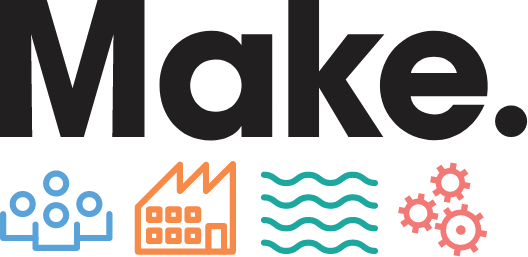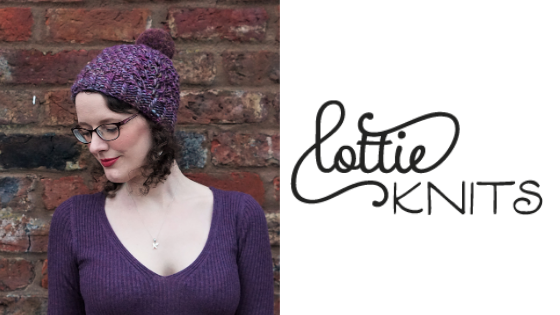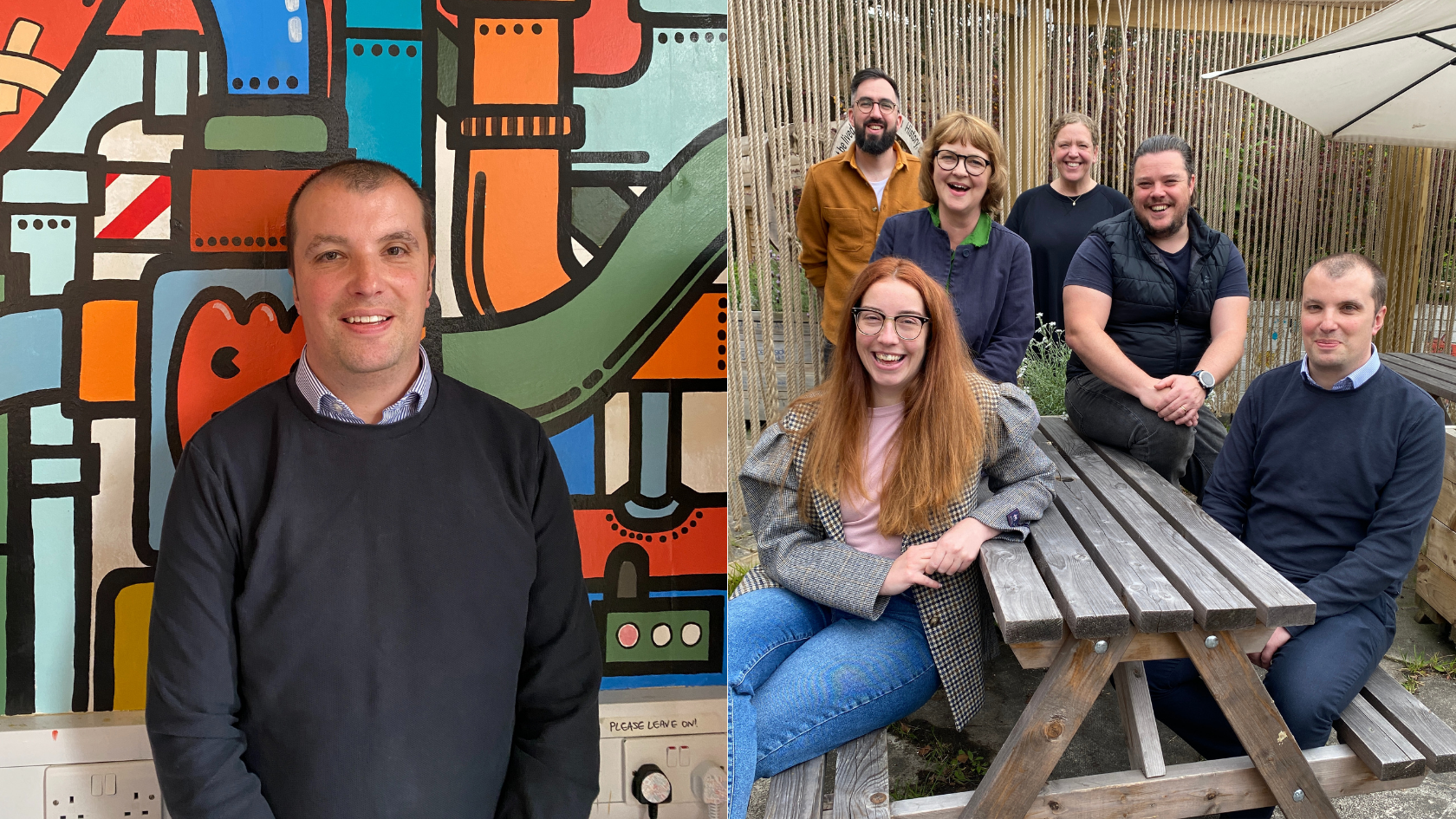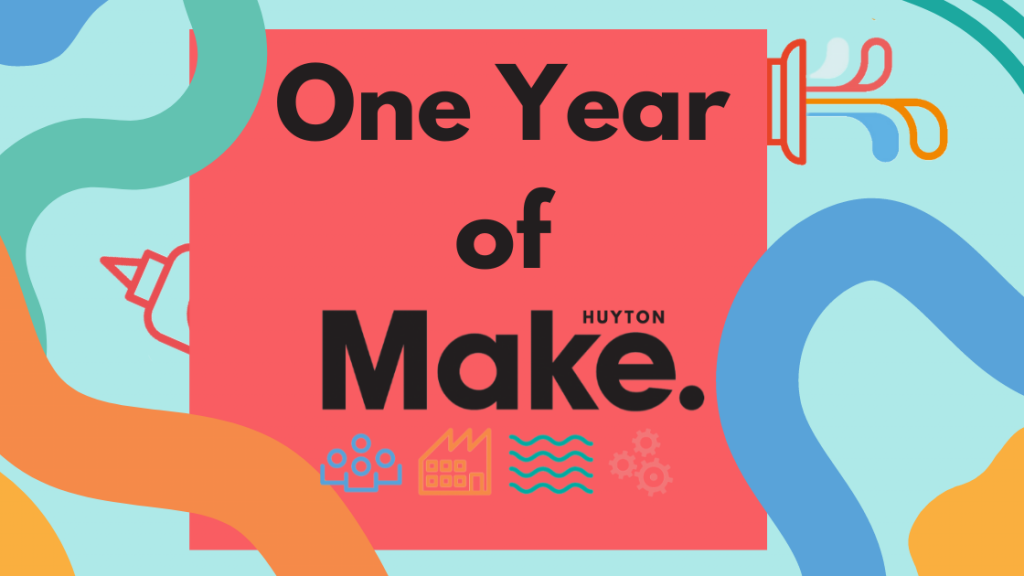It’s time for another monthly maker and this time I had a chat with Make Hamilton resident, and founder of Lottie Knits, Charlotte Walford. After what felt like forever, Lottie and I caught up for a coffee and a chat in our bright meeting room at Make Hamilton. (Heating on full because I’m nesh). Lottie told me the story behind why she started her business and gave us a little insight into the process behind hand-dyeing. Have a read below!
Hi Lottie! Can you talk us through what you make?
I hand-dye luxury yarns for knitting and crocheting. You can also use the yarns for weaving and any kind of project that requires yarn, like punch needling and weaving. But they are mostly bought by knitters and crocheters. I sell all my hand-dyed yarns on my website, which I designed myself. I started Lottie Knits back in January 2017, so I’ve been doing it for almost 4 years in January!
What made you start hand dyeing yarns?
My boss at my job at the time taught me how to dye because she used to be a hand dyer too, and I just really loved it. I’ve always loved colour and just playing around with colour in any kind of context. But I didn’t go into art or anything like that after school. I thought I should do something “sensible”, so I actually went to university in Leeds to train to be a dentist. Unfortunately, I was ill in my second year and had to leave uni. While I was getting well enough to work, I taught myself to knit, back in 2006. After this, I went to work in a yarn shop in 2010 and then in a company that makes yarn, during this time I started Lottie Knits.
Knitting was the first time after leaving uni that I felt like there was something I was actually really good at, and I had loads of creative ideas, so I wanted to explore what I could do with it. I got published for one of my knitting patterns in 2010, so I’ve been deisgnong knitting patterns for a while. So I did that for quite a few years beforehand, and I still design some patterns now.


So the business has kind of morphed over the years. I was always a little bit frustrated with not being able to find the thing that was in my head. Because sometimes you have an idea for something you want to make but the exact yarn that you need doesn’t exist in commercial yarns. A particular fibre or specific dyeing technique might not be available all together in one type of yarn for what you need.
What’s your favourite piece or yarn that you’ve worked on?
My favourite thing is usually the yarn that I’ve just dyed because I don’t tend to repeat things very often. I’m working on a few more repeatable semi-solid colourways where it’s mostly one colour but with variations within it. People like them for more technical projects, but most of my dyeing is variegated shades, so you have lots of colours all in one skein of yarn and I kind of just go where the mood takes me.
Do you have a favourite colour to dye?
I do always come back to purple and teal. My faves too! I have to try really hard not to dye those colours all the time. I’ll look at what I’ve dyed in a day, and everything will have teal and purple in it, so time to go back in the dye pot! I like bright colours, it makes me sad that so much fashion is neutral. I wish people weren’t afraid of colour, it’s such a shame, colour brings me so much joy. Colour really lifts your mood. There’s definitely a place for neutral palettes, but it’s just not my thing.

What advice or words of wisdom would you give to anyone who is thinking of working for themselves?
Make sure you are doing something that you actually enjoy because it’s a lot of hard work. You need to have something to motivate you in the times where you have to do the boring admin stuff. There needs to be a reason to get through the boring bits to do the thing that you like. You have to put your heart and soul into it, so you have to really like what you do. I would say that it’s important to take advice from other people but also don’t be put off by people who say they don’t think it will work. Just give it a try.
Obviously, it’s not always as simple as that, as different people have different resources that they can draw on. I’m lucky because I had a job at that point, so I could invest some of my own money into starting up and buying the equipment. But you can start as a hand dyer with one pot on your kitchen hob at home. As long as you are careful with the health and safety aspect, and don’t use any of the pans or utensils you use for food, you can totally do that.
Can you give us a quick run through of the process of hand dyeing, if its not too complicated?
It’s not too complicated. The basics are if you’re dyeing a natural protein fibre (animal fibre yarn) you can use acid dyes. For those to set, you need heat and acid, and the yarn needs to be damp. You can use a mild acid like citric acid or white vinegar that you can buy in the supermarket. And obviously, you need dye too! There are lots of different ways to make the dye fix on the yarn. A lot of people get bogged down with whether the technique is right or wrong. But in the end, what you need is enough heat and acid to fix the dye. How you get there is up to your creativity and the effect that you want. So there are lots of different techniques.
Do you have a best seller?
Probably my Little Bird Sock yarn, it’s made from merino wool and nylon. You can use it to make socks but it can be used to make anything really! The nylon makes it strong enough for socks, but you can use it for a sweater, hat, mittens, a shawl, scarf, gloves, whatever. It’s the most versatile of my yarns, people aren’t scared to buy it because they know that they can make all sorts of things with it.
What are you working on next?
I have to finish dyeing yarn for the advent calendar that I’m doing this year. I wrap up all of the tiny skeins individually and package them in little bags. There are twenty-five individual 20gram skeins in each of them. I try to plan it so there are groups of five mini skeins that you could use together. So there’s 500grams of yarn which you can make something big with, or you could make five small projects instead. A lot of people buy them as gifts or treat themselves so that they’ve got something to knit with in the new year. One lady has made several sweaters from her calendars over the years.
Sometimes people tag me in pictures of things they’ve made on Instagram, it’s lovely to see what people make. That’s the bit that I really love, seeing people enjoy using something that you have created and knowing that it brought joy to somebody else. That makes it worthwhile, I think. I want to inspire people to be enthusiastic about making things because that’s how I feel about it. I think that sometimes when you make things other people can put pressure on you to make stuff for them because they see it as a commodity. And sometimes people don’t enjoy making because they feel obliged to do it. Often people don’t understand how much time and effort goes into something. But particularly at the moment, you just need to make something for the enjoyment of it.
At some point, I would like to teach workshops and teach people how to dye but maybe sometime in the future.
What’s it like having a studio at Make?
My studio at Make is the first space of my own. Before I had this studio, I used to dye in a garage that belonged to a friend who very kindly let me use their space. I was so grateful to have that space and be lucky to use the garage space for around 2 and a half years. But it’s lovely to be at the point where I can have my own space and arrange everything how I want it. It’s helpful to have a permanent home for everything.
Before I was at Make, it was tricky to find a space, so many places are unaffordable because they are a lot bigger than what I currently need. I think a lot of creatives struggle with that situation when finding a space. Discovering that Make had space available after months of searching was the best day. It’s lovely to be in a space with other creatives. It can be lonely working on your own, so it’s great to have that sense of
community and see other people working on different things to you. It is interesting and inspiring to see other people’s work.

Where can people find your products and services?
You can get my yarns via my website – https://www.lottieknits.com/
Follow me on Instagram, Facebook and Twitter @lottieknits
INTERESTED IN JOINING THE MAKE COMMUNITY?
We’d love to have you! Find out more about our studios HERE or drop us a line at HELLO@MAKELIVERPOOL.COM.
Be sure to follow us on INSTAGRAM, FACEBOOK, and TWITTER and SIGN UP to our mailing list to stay up to date.














